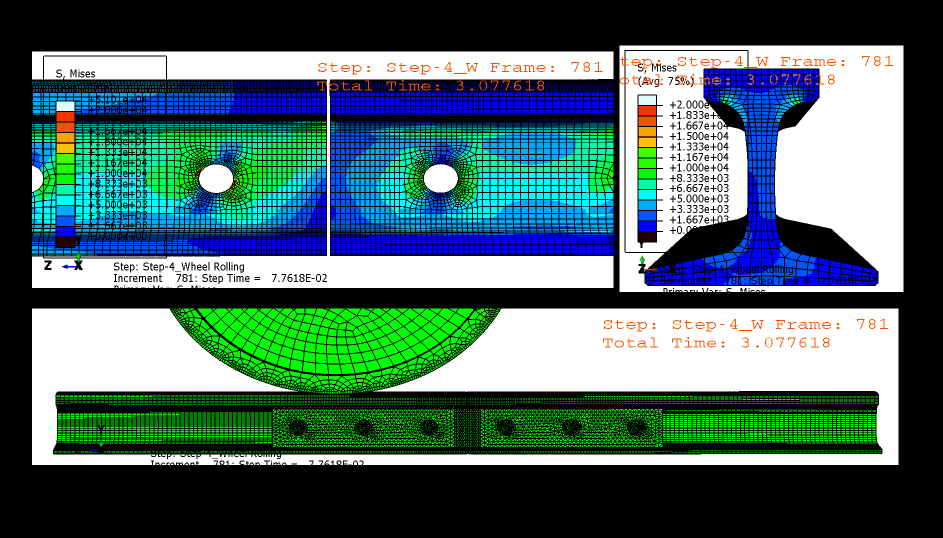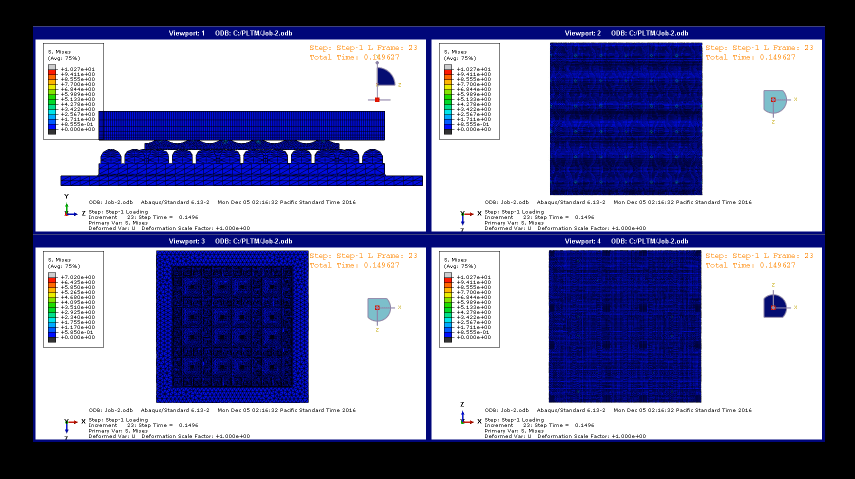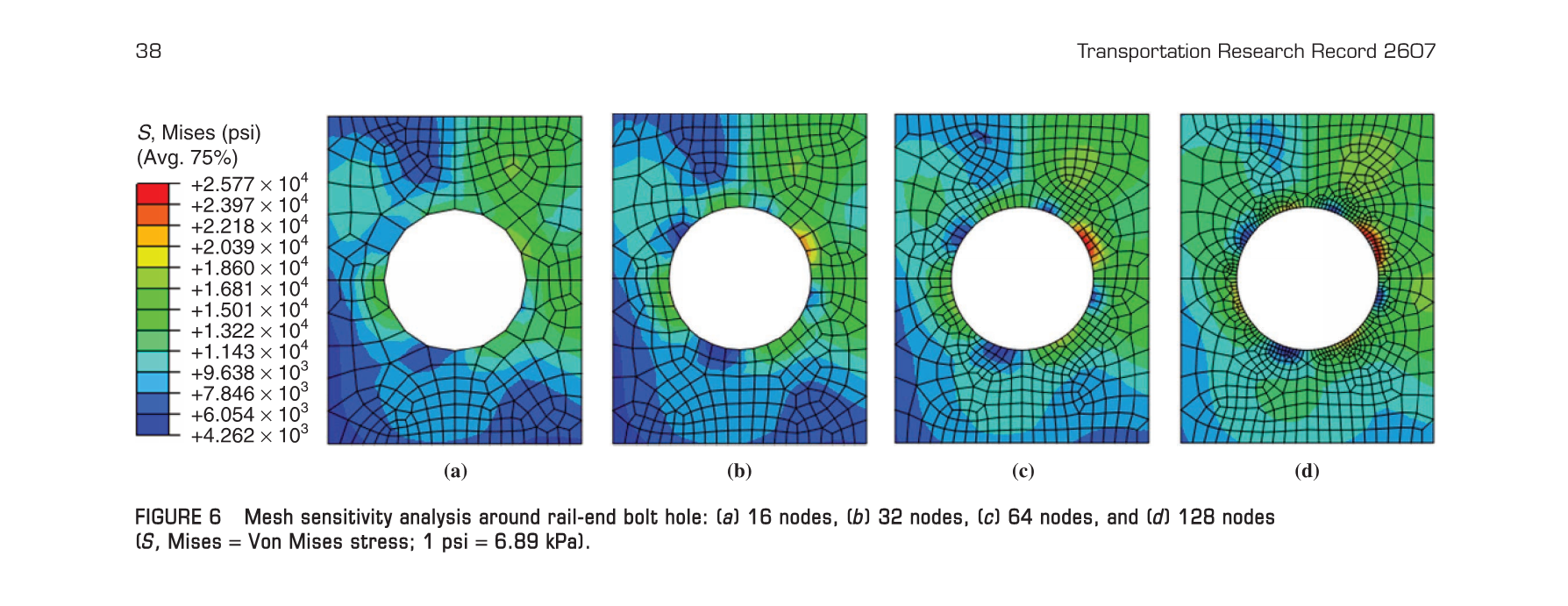Research
It is always exciting to explore the unknown.
Investigation of relationship between train speed and bolted rail joint fatigue life using finite element analysis

This study investigated the relationship between train speed and impact load and corresponding stress propagation around the rail joints to better understand the effectiveness of speed restrictions for bolted joint track. When train speed is reduced, the maximum contact force at the wheel–rail interface may not necessarily reduce commensurately.
Comparison of Under Ballast Mat Performance With Different Support Conditions Through Laboratory Experiment and Numerical Simulation

Finite element simulations were performed to further study the stress distributions under these various support conditions. The results from this study can help practitioners better represent the application environment during the UBM bedding modulus tests by suggesting the appropriate support condition.
Finite Element Analysis of Rail-End Bolt Hole and Fillet Stress on Bolted Rail Joints

Stress distribution was investigated at the rail-end bolt hole and upper fillet areas of standard, longer, and thicker joint bars under static loading conditions. Numerical simulations were organized into a comprehensive parametric analysis performed with finite element modeling.
Finite element analysis of the effects of bolt condition on bolted rail joint stresses

This study investigated the effects of bolt loading and missing-bolt configurations on the stress distribution at the bolt hole and the upper fillet area under static loading conditions. The two center bolts, which were closest to the rail end, were the most sensitive bolts in terms of variation in stresses in response to changes in bolting and torqueing.
